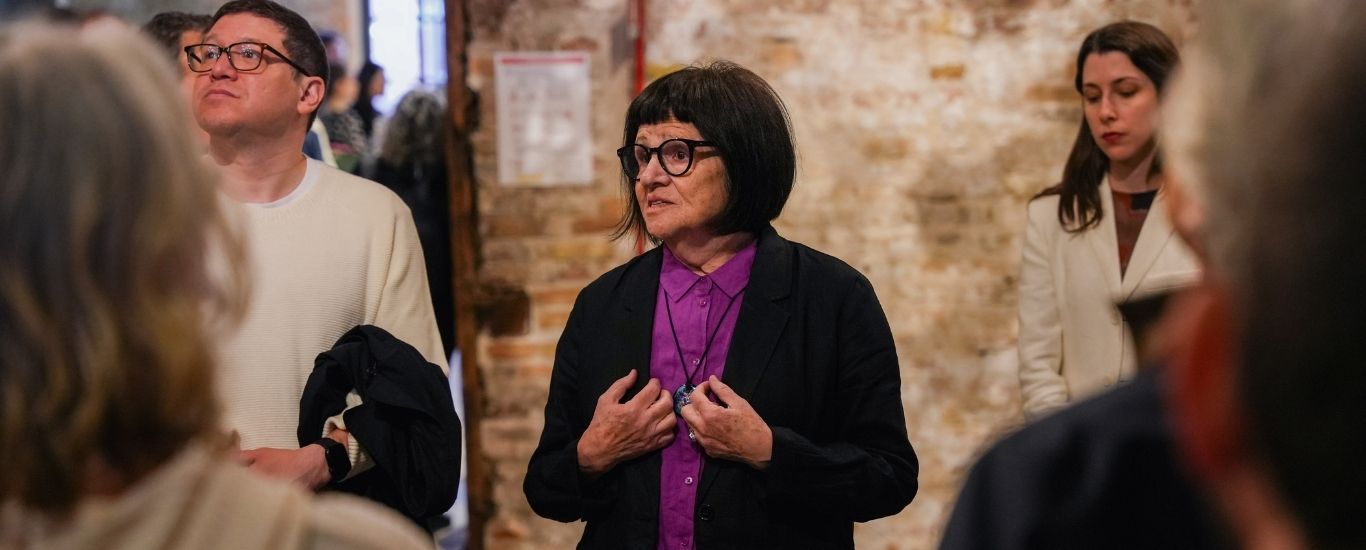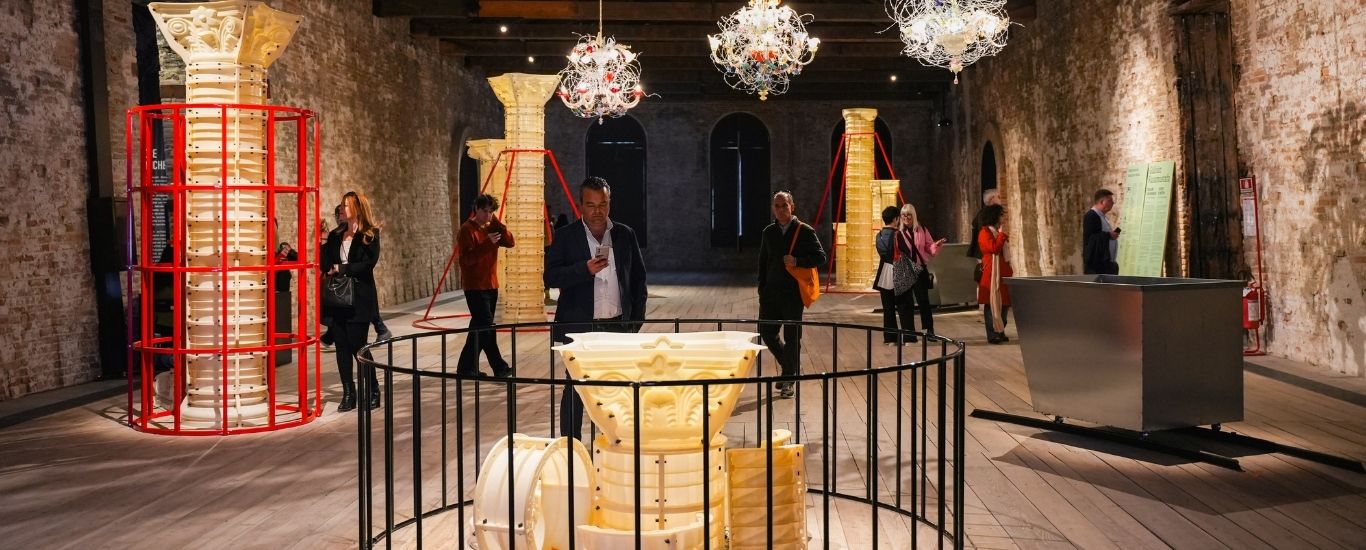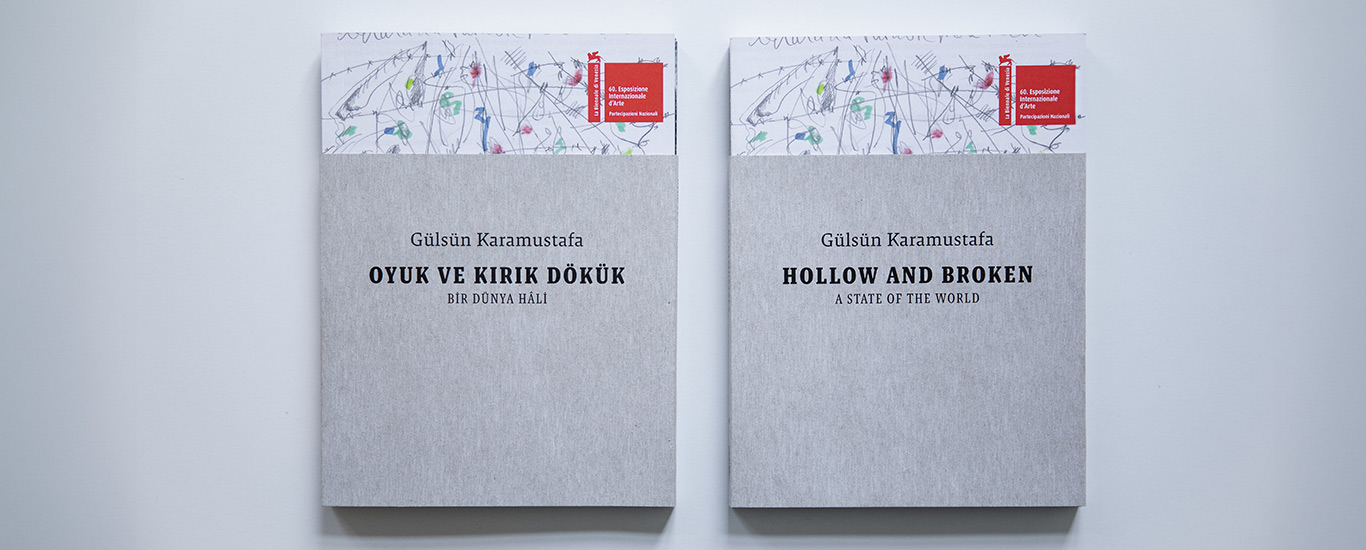The 60th edition of the International Art Exhibition of La Biennale di Venezia closed its doors on 24 November. The biennial opened to the public on 20 April, welcoming 27,966 art professionals and media members during the preview days and 700,000 ticketed visitors throughout the span of the exhibition. Of these visitors, 59% were international travellers. The Türkiye Pavilion, located in the Arsenale wing, hosted the site-specific installation, Hollow and Broken: A State of the World, by artist Gülsün Karamustafa.
The Türkiye Pavilion at the 60th International Art Exhibition was commissioned by the Istanbul Foundation for Culture and Arts (İKSV) with contributions from the Ministry of Culture and Tourism, under the auspices of the Ministry of Foreign Affairs of the Republic of Türkiye, in global partnership with Turkish Airlines, and with the production and publication support of SAHA Association.
Türkiye Pavilion in the spotlight of international media

Photograph: Fatih Yılmaz
The Türkiye Pavilion has garnered widespread attention in the international media, with artist interviews featured on Berlin Art Link, Kunstforum, and Monocle Radio; mentions in must-see lists on ArtReview and Wallpaper; a photo story by the Associated Press; and news stories on The Telegraph, ARTnews, ArtAsiaPacific, Artlyst, ArtAsiaPacific, Designboom, and Artribune Finestre sull'Arte.
Hollow and Broken: A State of the World

Photograph: Fatih Yılmaz
Titled Hollow and Broken: A State of the World, Gülsün Karamustafa’s site-specific installation drew attention to a world where destruction has become commonplace, and values have eroded, by transforming columns – historically symbols of stability, prowess, durability and victory – into hollow moulds. Karamustafa’s installation evoked a battlefield where light fails to illuminate, featuring visual elements such as chandeliers made of Venetian glass wrapped in barbed wire and wagons carrying shards of glass on endless tracks. For her installation in Venice, Karamustafa produced a new film and sound composition, incorporating black-and-white propaganda footage focused on war and spectacle.
The artist’s statement can be accessed online.
More on Gülsün Karamustafa to be explored in the publication

Photograph: Fatih Yılmaz
The publication that complements the exhibition consists of four pieces: one book dedicated to the Venice project with 12 contributors reflecting on the materials employed by Karamustafa, and another focusing on the artist’s previous works in which the artist’s fluid narrative unveils a multilayered continuity in her practice leading up to the Hollow and Broken. A folded poster with snapshots from Karamustafa’s new film is also inserted. Finally, a stripe holds all these three elements together. The book is edited by Melis Cankara with graphic design by Esen Karol. The project team of Hollow and Broken: A State of the World consists of Yelta Köm, the design consultant of the exhibition, Furkan Keçeli, the sound design consultant of the exhibition, and Erinç Tepetaş, the lighting design consultant of the exhibition.
The publication in English is available for purchase at Mousse.
More information on the Türkiye Pavilion and the archive of previous exhibitions are available at iksv.org.
